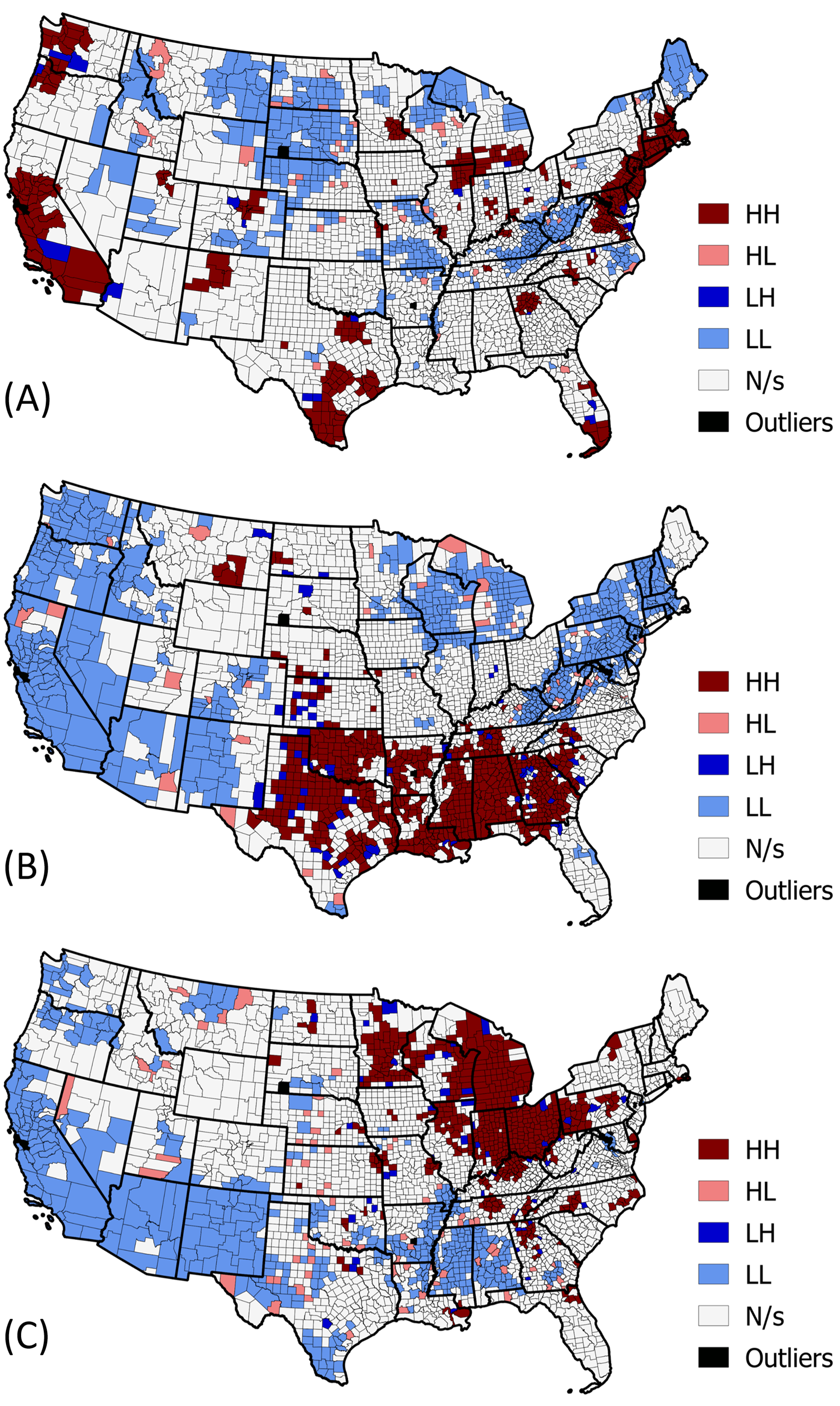Human Mobility Change in the US During COVID-19
Project Leads
- Andreas Züfle
- Hamdi Kavak
- Taylor Anderson
Student and Senior Collaborators
- Justin Elarde (GGS undergraduate -> CDS MS student 2020-2021)
- Joonseok Kim (Postdoctoral researcher 2020-2021)
Project Dates
2021
Summary
In this project, we study mobility change in the US through a five-step process using mobility footprint data.
- (Step 1) Quantify daily changes in mobility for each US county from 2019-2020.
- (Step 2) Conduct Principal Component Analysis (PCA) to reduce the change of mobility data to lower-dimensional latent components.
- (Step 3) Conduct clustering analysis to find counties that exhibit similar latent components.
- (Step 4) Investigate local and global spatial autocorrelation for each component.
- (Step 5) Conduct correlation analysis to investigate how various population characteristics and behavior correlate with mobility patterns.
Results show that by describing each county as a linear combination of the three latent components, we can explain 59% of the variation in mobility trends across all US counties. Specifically, change in mobility in 2020 for US counties can be explained as a combination of three latent components: 1) long-term reduction in mobility, 2) no change in mobility, and 3) short-term reduction in mobility. Furthermore, we find that geographically close counties are more likely to exhibit a similar change in mobility. Finally, we observe significant correlations between the three latent components of mobility change and various population characteristics, including political leaning, population, COVID-19 cases and deaths, and unemployment.
Publications & Presentations
- Change of human mobility during COVID-19: A United States case study
J. Elarde, J-S. Kim, H. Kavak, A. Züfle, T. Anderson
PLOS One, 2021, 10.1371/journal.pone.0259031
[Paper] [BibTeX]
Funding
Last updated on Jan 30, 2022.









